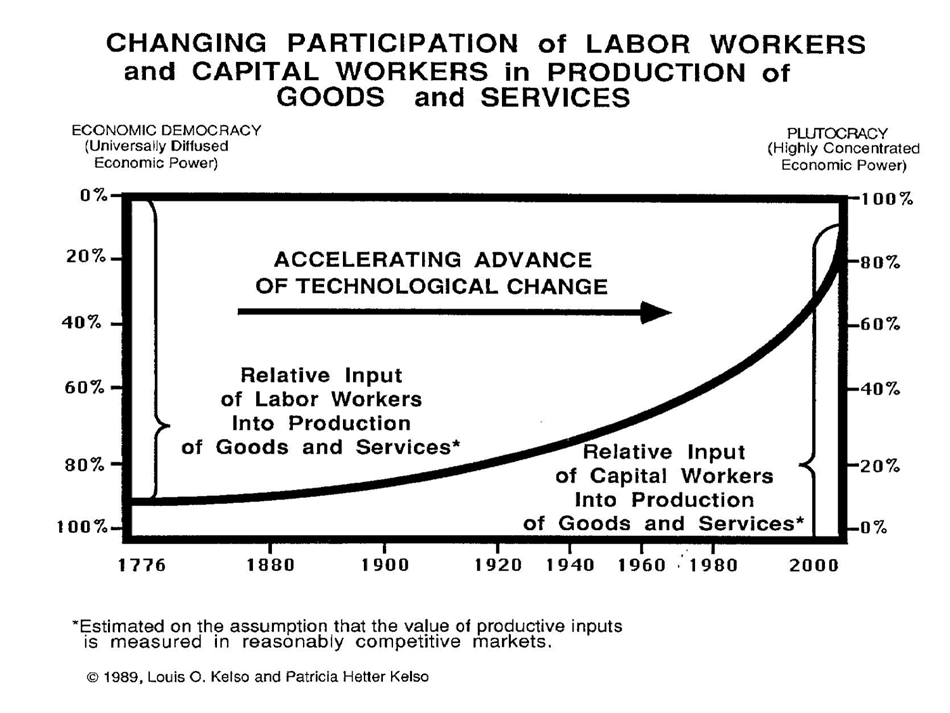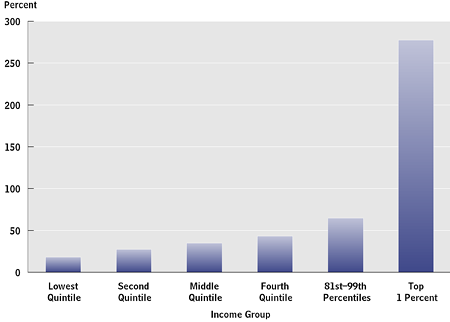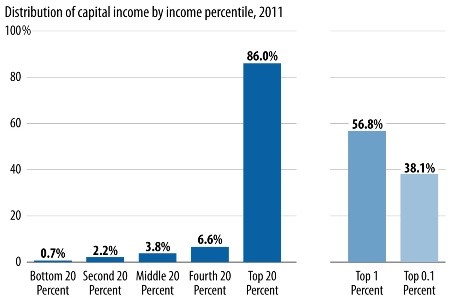Research
The research section includes articles and publications from leading scholars providing additional supportive data and information for the movement.

|
NBER 1050 Massachusetts Avenue Cambridge, MA 02138 |
|
The Congressional Budget Office
(CBO) on Income Inequality
Tabulating Inequality Trends
http://econbrowser.com/archives/2011/10/cbo_on_income_i
This chart shows that real after-tax income of the top 1 percentile has risen about 275%, and the pre-transfers/pre-tax income share of the top 1% has increased most profoundly.
The Economics of Inequality
http://www.politicalaffairs.net/the-economics-of-inequality/
This chart shows that the top 20% of households receives 86% of all capital gains and all capital income.
Source: Urban Institute-Brookings Institution Tax Policy Center

In 1776 everyone with citizenship had potential economic power because labor was the main source and everyone was born with it. Therefore, economic power was democratically diffused.
Then, as you see from the chart above, as technological change advanced, capital workers grew at an exponential rate. The inputs of capital workers and labor workers have roughly changed places! Capital workers now produce at least 90 percent of the input to the economy, with only 10 percent coming from labor.
Adam Smith said, “There is only one way to earn income—produce something.” If that is true, we are de facto in a real mess.
In today’s highly industrialized world, wealth has a close connection to both technology and capital formation. Technological power marches on, yet labor can only work so hard for so long. Tragically, for the most part, we have decoupled labor from capital. The masses of labor own no capital and therefore can’t possibly keep up. Herein lies the root cause of the pervasive, precipitous decline in the standard of living for both the middle and lower classes. The blessings of technological advancement caused their ability to keep pace with income via just their labor to be slashed over time.
This is why, in this day and age, the poor stay poor and the rich get richer.


